Dressed in bright orange (“Carousel Red”) and festooned with decals; offering flashy looks, high performance, and a lengthy list of gimmicks; and bearing a name inspired by a popular TV comedy bit, a 1969 Pontiac GTO with “The Judge” package was arguably the ultimate expression of ’60s Pontiac swagger. Car Life tested The Judge in March 1969, and came away somewhat underwhelmed.
The editors of Car Life had always liked the Pontiac GTO, which had continued to set the pace for the intermediate Supercar market. They had therefore received the announcement of a new version for 1969 with some excitement, wondering what Pontiac would do next:
ALL A-QUIVER, we went to glamorous exotic Riverside Raceway to see Pontiac’s latest offering, its answer to the latecomers on the Supercar bandwagon. Pontiac brass explained how they labored long and hard to come up with their newest. Drums rolled. Trumpets blared, and THERE IT WAS!
A GTO with cold-air kit and a four-speed stick.
Oh, not quite. The Judge, this year’s version of last year’s test car had:
An air foil.
A funny name.
Listed on the order form as RPO WT1, “The Judge” was an option package for the GTO, consisting of the Ram Air engine and cold-air induction system; the Ride & Handling Package; Rally II styled wheels; a blacked-out grille; a rear spoiler; and the obligatory stripes and decals. It was initially offered only in the eye-popping Carousel Red seen below. Only the appearance items were specific to this package — you could order all of the performance equipment on any GTO.

The photo captions in the center of the page read: “SPOILER is attached to struts that bolt onto the trunk lid. The tips curl down to the tops of the rear fenders. Usefulness at highway speed is minimal. SHIFTER is T-handle by Hurst, with maximum grip. It’s standard equipment on all stick-shift Judges, three speeds or four. An automatic is also available. HOOD-MOUNTED tachometer is easy to see and read while still watching the road. Factory paints red line at 5000 rpm, but engine wound happily to 6000.”

Car Life was very skeptical about the decklid airfoil, which was ostensibly functional, but mostly seemed like yet another gimmick, much like the concealed headlamps, body-colored Endura bumper, and hood-mounted tachometer:
On the street, the spoiler is becoming a fad. The Z/28 Camaro has a dam across the rear deck, as does the fastback Mustang. Javelin has an optional adjustable spoiler. Cougar has a new model, the name of which [Eliminator] we can’t inflict on the public, with a spoiler.
Pontiac’s engineers claim that the spoiler is functional, at speed. The man who did the design was at the introduction, and said that at 100 mph, the air foil puts an extra 70 pounds of down-thrust on the rear wheels. Keen, said a member of the press, but what does it do at 65, the speed which the sovereign state of California feels is reasonable and proper? Gee, said the engineer, he hadn’t computed it. Something less than half, he guessed.
Two issues later, CL tested the aerodynamic effects of some of these spoiler-equipped cars and found that the spoiler on The Judge did indeed reduce lift, albeit less than Pontiac claimed: The difference was about 30 lb at 115 mph. Unfortunately, reducing rear lift had the effect of raising the nose, which increased front-end lift and made the car significantly harder to control at super-legal speeds — not a desirable effect.
With the name, Pontiac earns the same sort of immortality as did the city fathers of Jim Thorpe, Penna., or Truth or Consequences, N. M. Who was Jim Thorpe? What was Truth or Consequences? Ask your father, and don’t be surprised if, in years to come, your son asks you whatever prompted Pontiac to name a car The Judge.
Some annotations are in order here:
- Jim Thorpe was an extraordinarily talented Native American athlete — a 1912 Olympic champion who subsequently played both major league baseball and professional football — who was stripped of his Olympic medals after the revelation that he had previously played professional minor league baseball. (The International Olympic Committee restored his honors in 1982, a long story.) In 1954, a year after Thorpe’s death, the Northeastern Pennsylvania borough of Mauch Chunk changed its name to Jim Thorpe, hoping that the grave site and memorial would become a tourist attraction — a controversial decision that some residents dismissed as “crass commercialism,” since Thorpe had never lived in or even visited the town.
- Truth or Consequences is a town in Sierra County, New Mexico, which was originally called Hot Springs. It changed its name in 1950 as part of a contest organized by the producers of the original Truth or Consequences radio quiz show. The radio show was broadcast from the town each May thereafter, as part of an annual festival, as was the subsequent TV show — which was still airing in first-run syndication when this Car Life article appeared.
As nearly everyone reading Car Life in 1968 or 1969 was no doubt already aware, the name “The Judge” was an allusion to an oft-repeated catchphrase on Rowan & Martin’s Laugh-In, a popular sketch comedy show then airing on Monday nights. Here’s a clip with Sammy Davis Jr.:
Using this name was suggested by John DeLorean, then nearing the end of his tenure as Pontiac general manager. According to former Pontiac ad man Jim Wangers, DeLorean said, “I keep watching that show, and every five minutes … they keep screaming, ‘Here come da Judge.’ Well, we’re going to give them The Judge.”
By the time the car arrived in December 1968, however, the editors of Car Life felt the bit had long since become oversaturated:
If they had shot the name on the rise, when everybody didn’t know where it came from, when television fans met on Tuesday morning and told each other the jokes, they might have gained something. The car was in the works back then. It was hinted at, announced, canceled and brought back. By now, everybody knows what’s coming. The label doesn’t get a puzzled stare, it gets knowing smiles, from sweet old ladies on the freeway, even.
Even more galling for Pontiac was that they ended up having to tread very cautiously with the actual catchphrase. DeLorean had assumed the division could make some kind of arrangement with the producers of Laugh-In, but the Pontiac legal department found that the show had actually licensed the bit from comedian Dewey “Pigmeat” Markham, who wanted a lot more money — $250,000 — than DeLorean was willing to pay to license it.
Consequently, Pontiac couldn’t use the complete catchphrase in its advertising and marketing, although the 1969 Pontiac performance brochure did include an excerpt of Hot Rod editor Steve Kelly’s new model introduction, where he said “Here come the Judge.” That probably antagonized Markham, if he ever saw it, but the caginess ultimately didn’t matter: Everyone at the time knew exactly what the name was referring to.

It should be said that The Judge had drifted quite far from its original concept. Wangers had first proposed it as the Pontiac E.T. (for “Elapsed Time”), a stripped-down budget Supercar with a hot Pontiac 350 engine that could compete directly with the popular Plymouth Road Runner in both price and performance. As it finally emerged, The Judge was a pricey option package for the regular GTO. Since even the base GTO cost hundreds of dollars more than a Road Runner, this largely defeated the original purpose, although The Judge was reasonably effective as a promotional item.
The photo captions on this page read: “COMPRESSIBLE GASKET seals hood scoops to the top of the air cleaner. Holes at each side connect with ducts running to the engine from behind the grille. LOCKED REAR tire, above, prevented testers from utilizing front disc brakes. Interior, below, was plush, and comfortable for long periods of time.”

The Judge was available with two different Ram Air engines, the Ram Air III or Ram Air IV. Both had four-bolt main bearing caps and a cold-air intake (although the hood scoops weren’t shaped or positioned to actually provide any meaningful ram effect). The big difference was in the camshafts: Ram Air III engines mated to automatic transmission had the same valve timing as the standard GTO engine, but with a bit more valve lift, while manual-shift cars had longer duration and more overlap. The Ram Air IV cam was considerably hotter still, with any transmission.

Officially, the Ram Air engines were little more powerful than the standard GTO engine:
- Standard GTO four-barrel: 350 gross hp at 5,000 rpm, 455 lb-ft of torque at 3,000 rpm
- Ram Air III: 366 gross hp at 5,100 rpm, 445 lb-ft of torque at 3,600 rpm
- Ram Air IV: 370 gross hp at 5,500 rpm, 445 lb-ft of torque at 3,900 rpm
However, just as everyone knew what “The Judge” meant, whether Pontiac acknowledged it or not, everyone interested in this class of car knew these numbers were a polite fiction. Car Life said of the test car’s Ram Air IV engine:
The engine is rated at 370 bhp. The division officials at the Judge’s introduction made it very clear that the engine produces more than this, and was given the rating to satisfy the head office, that is, General Motors, and the insurance people.
Estimates of the actual gross output have ranged from 400 to 450 gross horsepower. In his 1983 book American Supercar, Roger Huntington used the results of this road test to estimate the Ram Air IV engine’s net power as 340 hp at the clutch; given the carburetion issues Car Life described, I think that was probably a little low.

The Ram Air IV engine had an exceptionally hot cam for a street engine: Intake and exhaust duration were 308 and 320 degrees, respectively, with 87 degrees of overlap and 0.52 inches of valve lift. This produced plenty of high-rpm power, but the overlap gave the engine a rough, noisy idle, and it was decidedly unhappy below about 3,000 rpm. Car Life remarked:
The power curve must be something to see. We’d bet it goes straight up. There is very little power at low rpm. One tester opined that at low revs, it wouldn’t push water downhill. Exaggeration, said another staffer. So all right, the Ram Air IV will push water downhill.
These were the performance figures CL reported:
- 0 to 30 mph: 2.7 sec.
- 0 to 60 mph: 6.2 sec.
- 0 to 100 mph: 15.3 sec.
- Standing ¼-mile: 14.45 sec. at 97.8 mph
- Top speed: 124 mph at 5,800 rpm
- Test average fuel consumption: 7.8 mpg
Their acceleration times were good, but not outstanding for 1969 — these were not Hemi-frightening numbers.

The editors explained that the performance of The Judge was hampered by the difficulty of getting a good launch and by the finicky carburetor:
Quarter-mile times didn’t compensate for the Judge’s low-speed temperament. It wasn’t the best GTO we’ve driven. Last year’s car was just as touchy on the street, but fractionally faster at the strip. Fast starts were tricky: The engine wouldn’t come alive until 3000, so we couldn’t idle off the line. Dropping the clutch at 3000 put too much power down, and the tires spun. After much experimentation, the testers turned their best times by starting at 2500, and applying more power just as the tires bit and the Judge came off the line.
The Hurst T-handle shifter, standard equipment on Judge manual transmissions, worked well, but the engine sagged at each shift. The secondary barrels of the four-barrel carburetor open only when there’s a pre-determined flow of air through the primary barrels. On the test car, all four weren’t in operation until the throttle had been open for about one second. Power in each gear came in two steps. Had all 370+ horses been available at once, the times would have been better. A sharp tune-up man could do it. We test cars as they come from the factory, so it wasn’t done.
One other point that likely affected acceleration was the test car’s 3.55 axle. The 1969 Pontiac performance brochure alleges that the only axle ratios available with the Ram Air IV engine were 3.90 or 4.33. However, Car Life‘s previous Ram Air GTO test car had had a 3.90 axle rather than the 4.33 that was allegedly the sole axle ratio available with the Ram Air engine in 1968, so obviously the factory and the brochure were not always on the same page in this regard. The 3.55 axle was standard with the Ram Air III engine in 1969, but while that ratio might have been a good compromise for the less peaky GTO engines, the Ram Air IV engine’s power band was narrow enough that it really needed close-ratio gears and a deep rear axle ratio to exercise its power.

Despite its standard Ride & Handling Package, with heavy-duty springs and shocks, CL felt that handling was not The Judge’s forte:
At a brisk pace, the Judge is responsive. The driver can tell what the front wheels are doing. Initial understeer is kept within bounds by cranking on more steering lock.
More speed, and the Judge wallows across the track. Once the front slides in earnest, all the steering available won’t help. Hard braking slews the rear wheels out. The only escape from a tight corner is letting up completely on the accelerator, so the front wheels can catch, and scrub off speed.
Once this point is passed, when all the weight is riding on the outside front wheel, full power and the proper gear can hang the tail out. Once pushed to the wall, the Judge could be accelerated through turns at extreme angles. This should only be done experimentally, on a road course. Driving the Judge at speed is enjoyable, but not rewarding.
Since the GTO had first become available with front discs in 1967, Car Life had found its stopping power excellent, but the brakes on The Judge suffered poor front/rear proportioning and premature lockup. Fade was relatively low, which was a step up from the drum-braked GTO, but control loss could become a problem in hard stops, and the need to back off on the brakes to avoid a skid limited deceleration rates.

The editors liked the hood-mounted tachometer, finding it refreshingly easy to read …

… but they were not so keen on the secondary gauges in the Rally Gauge Cluster:
But the water temperature and oil pressure gauges are upside-down. Do we mean that when temperature and pressure go up, the needles go down? Yes, and a panicky feeling it is to be sardining down the freeway, glance at the oil pressure and discover the needle slumped on the floor. Why Pontiac doesn’t let up mean up, we don’t know. The driver can get used to it, just as buyers of those fad wristwatches can get used to a clock hands that rotate counter-clockwise, with three o’clock at nine o’clock and so forth. We simply don’t see why they should have to.
If you click on the photo below for the full-size version, you’ll see what they mean:

Unlike the previous Ram Air GTOs CL had sampled, whose short final drive ratios had made sustained freeway driving an aggravation, the editors noted:
The Judge is at its best on the highway, where the engine runs fast enough to be happy, and the suspension needn’t do things it doesn’t like to do. The noise is enthusiast noise, and the inside is comfortable for long trips. At low speeds, the engine can be lived with, and while the Judge isn’t the quickest car around, it’s competitive, with quarter-mile times well under the Supercar 15-sec. barrier.
The 3.55 axle gave 21.5 mph/1,000 rpm in top gear, meaning the engine was turning about 3,020 rpm at a legal 65 mph — not too unreasonable for a Supercar, especially one with such a peaky engine.

Although the data panel lists the base price as $3,493, that reflected the actual base price of a GTO hardtop ($3,156) plus the $337.02 cost of the WT1 package. Ordering a four-speed was an extra $184.80, while the heavy-duty TH400 automatic was $227.04, and the heavy-duty Safe-T-Track limited-slip differential was an additional $63.19. The hotter Ram Air IV engine, which was normally a $558.20 GTO option, was an extra $389.69 on The Judge. You can see how the Car Life tester ended up with an as-tested price of $4,439.
The photo caption reads, “OVERSTEER at speed made the Judge’s front wheels plow ahead, and the driver needed full steering lock to keep the car on the course. It’s better on the highway.”

Given its price tag and extroverted appearance, The Judge sold surprisingly well in 1969 — the package was ordered on 6,833 cars, 9.4 percent of 1969 GTO production. Only 759 1969 GTOs had the expensive, fussy, specialized Ram Air IV engine, which, predictably, is now a hot commodity for Pontiac collectors.
Even with the hot engine, Car Life came away mildly disappointed with The Judge, which wasn’t any faster than their previous test cars and hadn’t advanced the state of the art in any meaningful way:
Maybe the problem is that we expected more from The Great One. Pontiac has built and is still building excellent cars. This year, the result was the Grand Prix. It may inspire a horde of imitations, just as the first GTO did.
But the original Supercar hasn’t kept pace. Maybe Pontiac isn’t allowed to. The Grand Prix gets the big engine, because its wheelbase moves the car out of the intermediate class. General Motors won’t let the divisions use bigger engines in intermediates, so Pontiac can’t do a Ford. Pontiac doesn’t have compacts, so it can’t do a Chrysler with pocket Supercars. The 400-cid engine has apparently gone as far as it can go. Pontiac could, and we’re told will, adapt a rear anti-roll bar like Oldsmobile’s, but that’s the only easy improvement the suspension could use.
The GTO would finally get a rear anti-roll bar for 1970.

The editors mused:
What’s left? A hot semi-Supercar, possibly, with GTO suspension and engine for a Tempest coupe, like Olds’ W-31. Flamboyant Pontiac didn’t go that route; they opted for orange paint, a spoiler and that name.
Can’t fool the kids, right? Don’t bet on it. You’ll be betting against Pontiac.
As things turned out, that was much a safer bet than it had seemed at this time. The Judge returned for 1970, but sales fell to 3,797; Pontiac tried one more time in 1971, but the joke had gotten stale, and The Judge sold only 374 units in its final season. In 1970–1971, Pontiac also tried the semi-Supercar route with the T-37, a stripped-down Tempest/Le Mans that could be ordered with most of the GTO performance hardware, with or without a GT dress-up package. It was a ferocious performer when suitably equipped, but it never had the kind of identity or image the original Road Runner did, and the plain-brown-wrapper approach did little to mitigate the punishing insurance surcharges that were rapidly killing the GTO and other big-engine intermediate Supercars. For 1974, Pontiac tried to reinvent the GTO as a hot compact version of the Nova-based Ventura, but the “pocket Supercar” approach didn’t work either, and that was the end of the line.

It wasn’t only that Pontiac’s bag of tricks had run out — many of the people who had originally conceived the GTO and considered it a worthwhile concept were long gone by 1970. John DeLorean went to Chevrolet in early 1969, and ad man Jim Wangers didn’t stick around for long after that. Without them, division management had little enthusiasm for the youth-oriented performance image Pontiac had cultivated for the past decade, which soon faded away until the 1980s. This may be hard to comprehend today, when nearly every business on earth is obsessed with capturing the youth market and cars like this are now venerated to an absurd degree, but at the time, many Detroit executives were stolid middle-aged reactionaries who would rather not be associated with greasy young punks and longhairs, at least until they were old enough to buy a Catalina like a respectable person.

The editors of Car Life may have chided Pontiac and DeLorean for waiting a little too long to capitalize on the popularity of the Laugh-In catchphrase, but the reality was that for most of Detroit, it was a show they’d probably never watched and a joke they’d never get.
Related Reading
Vintage Car Life Review: 1967 Pontiac GTO Ram Air – “King Of The Supercars” (by me)
Vintage Car Life Road Test: 1968 Pontiac GTO Ram Air – “It’s The Wildest” (by me)
Pontiac Ram Air II, Oldsmobile Force-Air Induction, Chevrolet Cowl Induction – Did These Ram Induction Systems Actually Increase Power? (by me)
Vintage Car & Driver Comparison Test: 1969 Hemi Roadrunner, Chevelle 396, Ford Cobra, Cyclone CJ, Superbee and GTO The Judge – “Six Econo-Racers” (by Paul N)
Curbside Classic: 1969 Pontiac GTO Convertible – Hi-ho Silver! (by J P Cavanaugh)
Curbside Classic: 1969 Pontiac GTO The Judge: Here Come Da Judge! (by J P Cavanaugh)
Vintage Car Life Review: 1969 Pontiac Grand Prix Model SJ – “Tiger In Tuxedo” (by me)









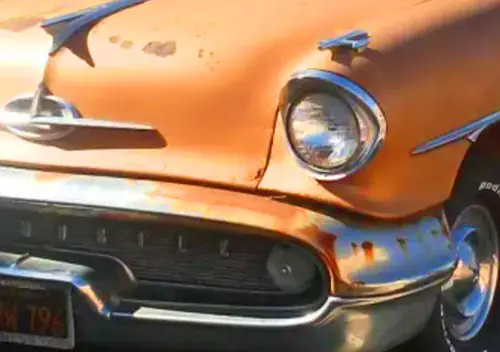
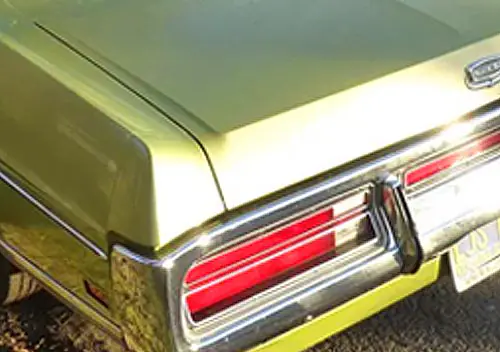





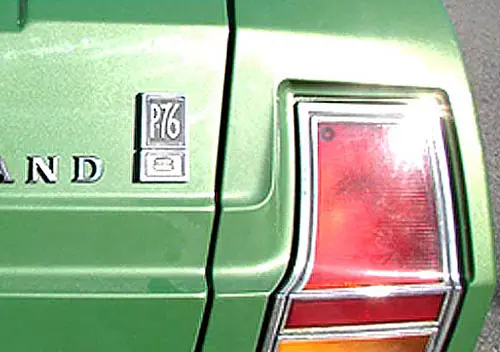
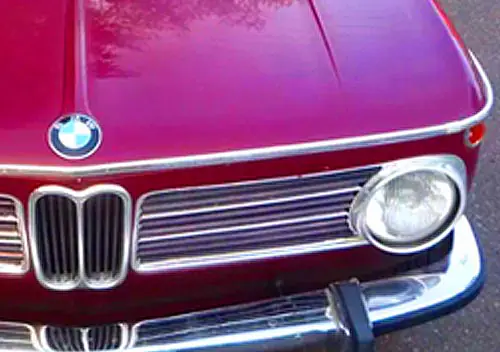


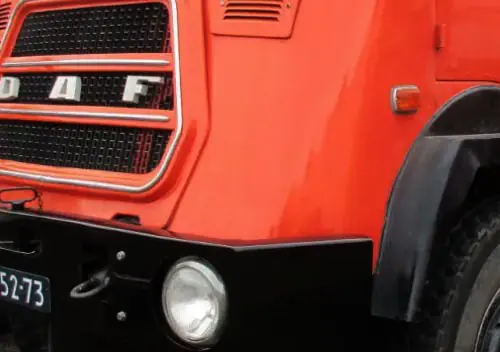
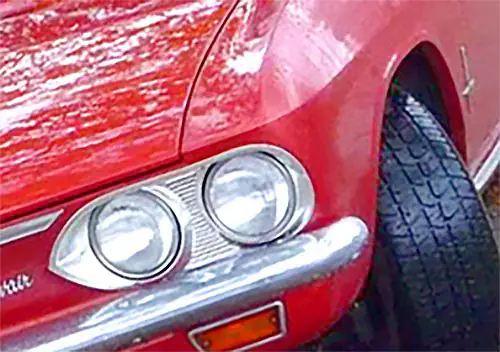


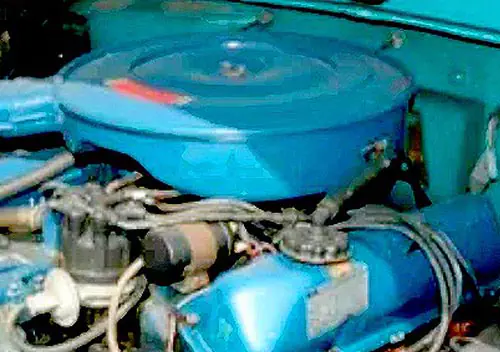



It might be worth to mention that GTO Judge ad featuring Paul Revere and the Raiders.
I’m more partial to the earlier ‘SS396’ by Paul Revere and the Raiders, or next year’s, one-time-only GTO ‘The Humbler’ tv commercial shown during the Super Bowl half-time.
As to The Judge package, whenever I see a reference to that version of the GTO, I’m reminded of a couple of things. The first is that Goat sales, previously number one of all musclecars, dropped to third place in 1969, behind the #1 Road Runner and #2 SS396.
Then there’s the Warren Oates character in the classic Two-Lane Blacktop (1971) about a couple of itinerant street racers (musicians James Taylor and Dennis Wilson) and their fiberglass front-end ’55 Chevy.
They come upon Oates (identified in the credits as simply ‘GTO’) early-on who drives a new 1970 Judge. Oates is an older, street racing poseur, seemingly the exact demographic for which musclecar advertising targeted, complete with leather driving gloves and racing jacket. That portrayal wasn’t by accident and something of a statement in how the whole street racing scene had devolved into nothing more than Detroit marketing with the success of the GTO being the most responsible.
The irony is that, although falling short in actual drag racing performace versus its musclecar contemporaries (mainly from Chevrolet and Chrysler), the GTO was actually the most well-rounded, daily-driver musclecar throughout its reign. New buyers might have been disappointed by its straight-line performance (I knew a guy who traded his brand-new 1968 GTO for a new 1969 Olds 442 W-30 for that very reason) but, otherwise, the run-of-the-mill, standard GTO that sold the most wasn’t that bad.
It seems to me you have it all wrong when thinking that Hollywood had it correct. You gave an extremely unintelligent and superficial take in putting all of the, or the majority even, muscle car drivers in the “poseur” box. It was just dudes having a little fun, actually. But if looking down on and describing others as shallow makes you feel better about yourself… The irony.
That’s not what he said, Oates in the film is a carbon copy of someone featured in an advertisement for these cars. It’s not necessarily who the actual demographic reflected but that’s what made him a poseur in the movie, down to his driving gloves. Up until the muscle car the street racing scene was dominated by hot rodders with more time/skill than money and I’m certain all these newer fast cars flooding the scene was seen as unearned by the die hard hot rodders portrayed by Taylor/Wilson.
The movie was an existential one btw, it wasn’t portraying either lifestyle actually being better, both by the end of the movie were equally unfulfilled and directionless. Oates earned a new story to lie to hitchickers about and Taylor/Wilson just kept on racing as per their norm before the film melts.
Furthermore I don’t know what age you are but I’d posit which dudes had more fun with the original run of muscle cars; the original buyers who made monthly payments and ultimately suffered through the prospect of Vietnam, prohibitive insurance premiums and the first gas crisis? Or the younger baby boomers and gen Xers who bought these dinosaurs dirt cheap in the 70s-80s when they were actually legitimately faster in grizzled ratty condition than almost anything you could buy brand new back then? The muscle cars ultimately became exactly what the 55 Chevy and 32 fords et al did when they were worthless late model cars, the very sort of cars a younger Taylor/Wilson would have been racing in the 80s, maybe even a primered out 70 Judge
As I saw them, by far the best looking were “64,’65,’66,’67 model years, and don’t even think about those that followed regardless of performance stats.
A common misconception is that the black grilles were part of the Judge package. The truth is that it was included with any Ram Air engine, Judge or otherwise.
FWIW, I continue not to believe this car had 3.55 gears. It’s either a mistake on the magazine’s writers, or it’s an engineering car that was set up improperly.
The original window sticker of The Judge in the Bring a Trailer listing from which the gauge photo was drawn explicitly describes the “blacked out grille” as part of the 554 option package. Nothing about that implies that it was ONLY part of that package, and since the Ram Air engine was standard on The Judge, this is a really absurd level of hair-splitting.
You can continue to believe it, but it doesn’t make it true. The test crew’s equipment included an electric tachometer in addition to the fifth wheel and accelerometer, so they would certainly have known if the test car had a 3.90 or 4.33 axle ratio. Magazine test cars are typically early-production models, and occasionally they have features or combinations of features that are not production-correct; that doesn’t mean the manufacturer didn’t build it that way, for whatever reason.
Regardless what a reproduction window sticker states, black grilles were included when either Ram Air 400 was ordered. Here’s the engineering drawings that specify this:
https://www.forums.maxperformanceinc.com/forums/showthread.php?t=623305&highlight=grille&page=2
That’s not hair-splitting at all.
It is hair-splitting: The Judge package came with the Ram Air engine; whether you got the blackout grille because you ordered “The Judge” or because of the Ram Air engine was completely immaterial. Six of one, half-dozen of the other.
Likewise, I agree that the 3.55 axle was not supposed to come with the Ram Air IV engine, and I said so very clearly in the text. Continuing to insist, without any evidence, that it was either a lie or an editorial mistake adds an unwelcome conspiracy-theory tone that I don’t think is justified. Press cars were sometimes weird one-offs; the 1968 Ram Air GTO Car Life drove the year before had a 3.90 axle instead of the 4.33 that was allegedly standard. That’s just how this stuff worked.
“The Judge – Consists of
400 Ram Air 4 Bbl. Engine
Rally II Type Wheels
Ride & Handling Package
Hood Ram Air Inlet–
Cable Controlled
Blacked Out Grille
Airfoil
Identification Decals & Vinyl Striping”
Pigmeat Markham also issued a studio version of “Here Comes the Judge” on a 45rpm record which became quite popular. A top-20 rap hit in 1968!
I never quite understood where The Judge was supposed to fit in with other GTOs – I had thought Pontiac actually followed through on making it a less expensive model aimed at the Road Runner, but apparently it’s just an expensive decal package added to a group of performance features available on any GTO.
Yup — an expensive decal package plus an airfoil of extremely dubious value (insofar as it served to raise the nose at speed!).
I wonder if the ultra rare ’72 ducktail spoiler was any better …
https://preview.redd.it/1972-gto-w-factory-ducktail-spoiler-v0-yd8xkd1540ke1.jpg?width=1080&crop=smart&auto=webp&s=475242515fe6669dd804babb8847033ce3d19ac2
The problem Car Life found was not that the decklid spoiler didn’t work at higher speeds, but that Pontiac hadn’t made any attempt to reduce front-end lift. So, the net effect of the rear spoiler was to tip the nose up and the tail down, which is not at all what you want at 110+ mph. So, paradoxically, the only way the ducktail spoiler would do better in that regard would be if it didn’t work to reduce rear lift.
The Judge was a performance package as much as an appearance package, as evidenced by the standard Ram Air III engine, which was the first step up from the standard GTO engine.
If you look at the market at the time, which included the Hurst/Olds and, eventually, the Cyclone Spoiler and Cougar Eliminator (with more slated for 1970), you’ll note that the Judge was perfectly suited for the performance arena.
In other words, DeLorean was correct in changing the intention of the package.
I, too, thought of Pigmeat when seeing this post. Regarded as one of the earliest “rap” songs, recorded in 1968.
As for the car, yawn.
The Here Comes the Judge album has a version of the sketch as well as the song, which is funny if you have a reasonable tolerance for that kind of Chitlin Circuit comedy.
My familiarity with this particular GTO is from “Two Lane Blacktop” (1971) because I remember the Ram Air callout on the airscoop of GTO’s (Warren Oates) car. It was a matter of speculation whether or not it was actually a Judge car without the stickers (there is “GTO” on the front fender nearer the doors, the car(s) in the movie also had the rear spoiler). Two factory GTOs were provided, and one exists today: even though GTO bragged about having a 455 under the hood, the actual car had a 400.
You be the Judge.
https://www.hotrod.com/news/hppp-0806-behind-the-camera-two-lane-blacktop
It’s absolutely a judge, they just swapped the decals to the standard GTO decal to match the character. You couldn’t get Orbit orange in any other GTO
Again
I was 16 at the time and was not impressed. The whole “here come da’ Judge” thing was already old, and the actual car offered nothing really new otherwise, except a higher price. It was a cynical, poorly-judged fail.
I remember seeing print ads for the car early on, and expected to see a bunch of them on the streets as time passed. But nope.
“Festooned with decals”? Next to some of the Mopar offerings at the time, I would say hardly. The graphics on this GTO are actually rather subtle by comparison.
The floodgates widely opened in 1970 with regard to decals for which id consider The Judge a contributer. I’d also defend the T/A in that it was a homologation special with limited production and having some mechanical kit you truly could not get on a regular challenger. That’s not really the case with The Judge
There’s also a question of quality as well as quantity. Some of the subsequent Mopar models had more total decal surface area, certainly, but there are tape stripes and then there’s, “Mommy, why does that car say ‘The Judge’?”
Fair points! I wasn’t aware that the T/A was a limited production car. Agreed that some of the other Mopar designs of the time did it better, for sure. And the name itself, yes… while names like Road Runner and Super Bee just felt lighthearted and fun, “The Judge” feels a little… well to use the current popular term, cringey.
The Judge name was always pretty conceptually flawed, the RoadRunner was a pop culture tie in to a cartoon that had existed for a decades, where Laugh in was really flavor of the month, it’s like if Pontiac had a GitRdone edition on the 04-06 GTO, riding the cultural wave of Larry the Cable Guy. Nobody 20 years old today would get either reference.
As for the car, I mean it’s cool looking, but being an appearance package with a price to match instead of a budget racer package as intended makes it no different to me than if you ordered a vinyl top or something on a regular GTO, and up this point for the most part cars with such a bold appearance package we’re part of a whole special package(Boss and Shelby Mustangs, Z/28s, etc) though The Judge was a top of the line genuine GTO, it really set a precedent for what would be known as “paint on performance” in the decade to come, with striped up slant six Volare Roadrunners and Mustang Cobra IIs
To that end, DeLorean was right with The Judge. In effect, the GTO had always been more of a premium musclecar package from the start and creating a downmarket version might have just cannabilized higher tier models.
None of the other budget musclecar attempts (save the Duster 340) did very well. There was also the 300 Deluxe SS396 and 1970 1/2 Falcon 2-door sedans. Then there was the 1970 Olds Cutlass ‘Rallye 350’ that was all show and little go, followed by the 1971-72 Heavy Chevy that began with a 307-2v engine.
Chrysler hit a real sweet-spot with the Road Runner’s initial packaging, but its success was short-lived. Soon enough, they began coming from the factory with lots of optional equipment that moved them much closer to the GTX. First, there was the mid-year 1968 hardtop, then the 1969 convertible version.
Even Pontiac had the GT-37 which for all intents and purposes could be optioned up to be a budget GTO. But by that time, the musclecar game was all but over.
One of my favorite ‘what might have beens’ is the 1969 AMC Rebel ‘Machine’ prototype. It was even more basic than the Road Runner with a matte-black primer finish, steelies, and a few decals. Instead, AMC went The Judge route for 1970 with lots of wild stripes and a hood scoop that included a tach.
Fair point, it’s sometimes easy to assume the Roadrunner package (in its most stripiest form) was an evolution of the muscle car at the time but it really just filled a substantial hole in the market without much to grow from. Plus given the nature of them being cheap speed, a used roadrunner, or whatever supercar is just as appealing to a gearhead buyer on a budget. Though I’d roll the Duster 340 into being synonymous with the Roadrunner, there’s no doubt in my mind it cannibalized its sales as well as the Barracudas.
I’m still not sure The Judge was a smart move though, maybe DeLorean was right in that upmarket was ultimately better for profits and image given the package couldn’t have cost more than pennies more than a standard GTO to manufacture, but I’d also make an argument that it cheapened the standard GTO in image as well, in the classic GM vein of Caprice>Impala>Bel air. The GTO from 64-68 was taking a Tempest/Lemans and beautifying it. With better grilles, better taillights, cooler hoods and eventually the endura bumpers and hideaway headlights but the Judge just added stripes and a questionable rear spoiler to push the envelope, and that kind of was the point the GTO’s beauty hit a dead end. Now it was following the Ford Fairlane GT/GTA playbook of adding stripes to make it stand out better in an ever saturated market the GTO was losing and would continue to lose ground on, Judge or no Judge
I’d also make an argument that it cheapened the standard GTO in image as well, in the classic GM vein of Caprice>Impala>Bel air.
This is the crux of the issue. As I said before, I was 16 at the time and a bit shocked by the Judge. The one reason I gave earlier was that the name was lame. But the more important reason is that it made the GTO look old and mainstream. The GTO had been both a rebel and style setter in its first some years. I know the ’68 restyle is controversial, but it worked and the GTO was still a style setter and unique with that Endura nose; a pretty cool thing at the time.
But already in ’68 the GTO was also becoming more mainstream, and offering the 265 hp 2V engine as a credit delete option was really lame; pathetic even. It really took away its creds as a leading edge street machine.
The issue is this: The Judge is what the ’69 GTO should have been, at least stylistically. It needed to rid itself of the vinyl roof, which was quickly becoming old-folks material. Even if the Ram Air was optional, it needed some zingier looks. The Judge package (minus the name) had it.
Of course that might have alienated some 40-something housewife’s that were starting to buy GTOs, but that’s what it would have taken to keep the GTO relevant in terms of image.
I understand what DeLorean was doing, as he saw the regular GTO become too popular and mainstream. So he had to create an Uber GTO, like a Boss 302/429 Mustang, and a Camaro Z28. But the name was lame and it really didn’t work anyway. The GTO was inevitably sinking into flaccid middle age. You can only be young once. The Road Runner learned that lesson too.
I think another factor was that Pontiac had become kind of boxed in. The next logical performance step would probably have been to put the 428 HO engine in the GTO, but that was still off-limits. Wangers’ cheaper “E.T.” concept would have entailed marketing a second, distinct product that would somehow have to coexist with the GTO. (Chrysler did that with the Road Runner and Super Bee, but the pricier GTX and Coronet R/T were slow sellers that hadn’t made much impression, so they didn’t have so much to lose.) The Endura nose was clever because it gave Pontiac a unique, readily identifiable styling element within the budgetary parameters of the A-body tooling situation, but the rear wing on The Judge didn’t have the same impact. It’s hard to see what else Pontiac could have done at this point that would have been seen as market-leading (“Pontiac has done it again!”) rather than trend-chasing, although The Judge was certainly the latter.
The guys of Car & Driver tested a 1968 Royal Bobcat GTO 428, where the guys of Royal Pontiac swapped a 400 for Pontiac 428ci.
https://www.caranddriver.com/reviews/a15142469/1968-pontiac-gto-428-royal-bobcat-road-test-review/ You can wonder what if GM had lifted the 400ci limit a bit earlier?
Also, Stampede Pontiac-Buick dealer in Calgary created a “poor’s man GTO Judge” with a model called The Jury from what I saw on that video.
https://www.youtube.com/watch?v=cL50gLFhLak
I quote the description of the video:”‘The Jury.’ Is a Canadian Pontiac built as an alternative to the GTO Judge based on the LeMans . Stampede Pontiac-Buick Motors of Calgary built 25 of these cars as a promo to bring people in to the dealership making this a very rare car.
The Stampede Pontiac Dealership dressed them up with a stripe package which included fireball decal, Jury logo and black bumblebee stripe over the rear quarter panel. As a more affordable alternative to the Judge, the Jury was priced at $2700 about $1000 less than the Judge.”
I’d thought “The Jury” would’ve been a good name for the Judge option package applied to a 3-row wagon.
Speaking of 3 row wagon with a Judge package, some folks converted some Tempest/LeMans wagons into GTO wagons.
https://www.stationwagonforums.com/forums/threads/custom-gto-judge-wagon.16775/